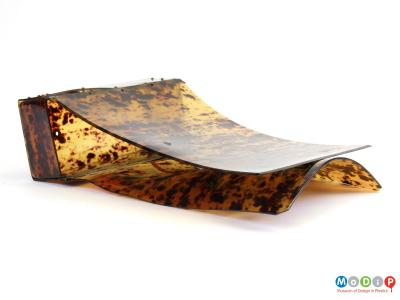Acronym and details: CA
Group: thermoplastic
Developed: first prepared 1865, adapted to form viscose silk 1892, but only developed as a hard material for commercial use from 1918 (although to form cellophane from 1908); not common until late 1920s. Use fell off in 1970s but interest currently reviving, as made from wood based cellulose, a renewable resource.
Trade names: Celanese, Estron, Plastacele, Bexoid, Tenite, Clarifoil
Manufacturing process: early examples compression moulded; from c.1928 injection moulded
Cost: medium
Colour: any, usually plain but occasionally marbled
Transparency: transparent to opaque
Rigidity: strong but slightly soft, may be flexible in thin sections
Feel: hard
Smell: vinegar (when degrading)
Other: will accept surface colouring
Typical uses: as liquid to stiffen and waterproof fabric wings and fuselage of early aircraft. In solid form in spectacle frames; type-writer keys; negatives and film; toys; fancy goods e.g. by Lalique; sculpture e.g. by Naum Gabo; hair brush handles, especially Addis Ltd; also as supports for archival material from 1940s
Degradation: shrinks, crazes, becomes ‘sugary’ and cracks. Acidic droplets; white bloom on the surface; and distortion (warping), a result of plasticiser migration



